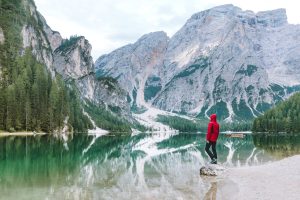Understanding the Social Effects of Tourism
Tourism has become a big part of our world, bringing people from different places together and changing communities. As we look at how tourism affects society, it’s important to understand both the good and bad social impacts of tourism on local people, cultures, and social structures. Using technology to understand the social effects of tourism is really important nowadays, and it’s something that the Travel Trade Ready platform can help you with. Let’s find out how in this in-depth guide…
Key Social Effects of Tourism
- Economic Impacts: Job creation and income distribution
- Cultural Exchange and Preservation: Protecting traditions while also sharing them
- Community Development: Infrastructure improvements vs. local needs
- Social Disruption: Cultural commodification and seasonal pressures
- Environmental Pressures: Balancing conservation and tourism demand
- Demographic Changes: Changing local populations and community dynamics
Tourism shapes societies around the world. As more people travel for fun and work, it’s really important to understand how tourism affects communities, cultures, and social structures. Let’s explore the different ways tourism impacts communities, both in the hear and now and in the future too.
Economic Impacts of Tourism
One of the biggest social effects of tourism is how it changes the economy. Tourism creates jobs and spreads money across different parts of the economy. For example, in South Asia, tourism added 8.9% to the region’s GDP in 2017, and it might go up to 9.4% by 2028. This growth creates jobs and helps develop the economy, especially in places where work in other industries might be scarce. When tourists spend money, it helps local businesses and can improve living standards and reduce poverty in many places too.
However, it’s important to recognise that not everyone benefits equally from the tourism money that a given location might bring in. Some people in the community might do really well thanks to the local tourism industry, while others might face problems like higher living costs or jobs that only last for part of the year. When a lot of tourist money comes in, it can also lead communities to depend too much on that tourism money, which can be risky if something happens to change travel patterns or in the event of a global economic issue.
Cultural Exchange and Preservation
Tourism helps people from different cultures meet and learn from each other. This can lead to better understanding and appreciation of different cultures – but tourism can also be something of a double-edged sword. Why? Because whiile tourism can help keep local traditions alive by making them valuable, it can also change these traditions to make them more appealing to tourists.
It’s important to keep cultural experiences real and genuine, or they cease to be the authentic slice of the local community that they used to be. Some communities have found amazing ways to share their culture with visitors while keeping it true to themselves – like embracing community-led tourism or programmes that teach visitors about their culture. These approaches can help create respect and real cultural exchange between tourists and locals.
Community Development and Infrastructure
Tourism often leads to better infrastructure in local areas too. As places try to attract more visitors, they build better roads, public transportation, and utilities to help visitors get around. There’s nothing saying that local residents can’t use this improved infrastructure too of course, so these improvements help both tourists and local people, making life better for everyone. However, sometimes these developments focus more on what tourists need rather than what local people need, which can cause problems.
The development of tourism infrastructure can really change how a place looks and how it’s planned out. While better facilities can make life better overall, there’s a risk of creating a separation between areas for tourists and areas where people live. Good tourism development tries to make sure that new facilities work well for both visitors and local residents.
Social Challenges
While tourism brings many good things, it can also create social problems. When lots of visitors come to a place, especially a small community not used to hosting many outsiders, it can disrupt local ways of life. Problems like there being too many people, too much noise, and changes in local customs can create tension between residents and tourists.
Also, because tourism is quite seasonal in nature, many tourist spots are simply busier at certain times of the year. This can lead to big changes in how many people are around and what’s happening in the community between peak and off-peak seasons. This can put pressure on local services and community relationships, so they need to be managed carefully.
Environmental Impacts
The social effects of tourism are closely connected to its environmental impacts. While tourism can make people more aware of environmental issues, and even help to pay for positive things like wildlife and nature conservation, it can also put pressure on local ecosystems. More pollution, damage to natural habitats, and overuse of natural resources can have long-lasting effects on both the environment and the communities that depend on it.
The relationship between tourism and the environment is complicated. On one hand, tourism can provide reasons to protect the environment, like preserving natural areas for ecotourism. On the other hand, more human activity in sensitive ecosystems can lead to damage and loss of biodiversity. Balancing these competing interests requires new approaches to sustainable tourism that prioritise both environmental protection and caring for the well-being of local communities.
Demographic Changes
Tourism can have a significant impact on who chooses to live in a given location. Popular tourist areas might see lots of tourism-industry workers coming from other regions or countries, changing the local mix of people. This can lead to both good things (like more diversity), and challenges, (like pressure on housing and public services).
These changes can have big effects on local communities. As new people come to work in tourism, traditional community bonds might be stretched. However, these new people can also bring new ideas, skills, and cultural diversity. Managing these changes requires careful planning and a deliberate effort to include everyone, in order to keep the community strong and maintain its identity.
Measuring and Monitoring Social Effects
To effectively manage tourism’s social impacts, it’s crucial to monitor key metrics:
- Local employment rates and economic health.
- Community satisfaction with tourism developments.
- Environmental sustainability efforts.
Modern technology, including data analysis, plays a key role in tracking these impacts. AI and machine learning can help predict trends and inform decisions for better policy and planning.
Strategies for Positive Social Impact in Tourism
To maximise tourism’s benefits and minimise its negative effects, consider these strategies:
- Involve local communities in tourism planning and decision-making.
- Ensure equitable distribution of tourism benefits across all community sectors.
- Invest in training and education programmes to improve local employment opportunities.
- Promote responsible tourism practises by educating visitors about local culture and environmental responsibility.
- Develop sustainable tourism policies that prioritise both growth and preservation.
By using these strategies and implementing positive impact strategies, destinations can work towards a more sustainable and socially responsible tourism industry. This approach not only reduces negative impacts but also uses tourism as a tool for community development and cultural preservation.
Conclusion: The Future of Socially Responsible Tourism
As we look to the future, it’s clear that understanding and managing the social effects of tourism will be crucial for the industry to grow sustainably. New trends like experiential travel, slow tourism, and virtual tourism experiences are likely to change how tourism impacts local communities in the coming years. These trends offer chances for more meaningful cultural exchanges and less impact on the environment, potentially addressing some of the problems associated with traditional mass tourism.
Technology like the TTR platform will continue to play a big role, offering new ways to connect tourism businesses with each other, and tourists with local cultures, while also providing tools to monitor and manage tourism’s social impacts.
As travel industry professionals, it’s our job to stay informed about these developments and work towards creating positive outcomes through tourism. This involves continuous learning, adapting best practises, and working together across different sectors to address the complex challenges associated with social impacts of tourism.
By prioritising community engagement, sustainable practises, and responsible tourism development, we can use tourism as a force for positive social change. Join us in shaping the future of responsible tourism and creating a world where tourism benefits both visitors and host communities alike. The future of tourism lies in balancing economic growth with social responsibility and environmental protection, ensuring that the industry contributes positively to global sustainable development goals while providing enriching experiences for travellers.
If this article helped you understand the social impacts of tourism and you’re eager to learn more, we invite you to explore our blog for additional resources and insights into the travel trade. Stay informed, stay ahead—visit our blog today!


